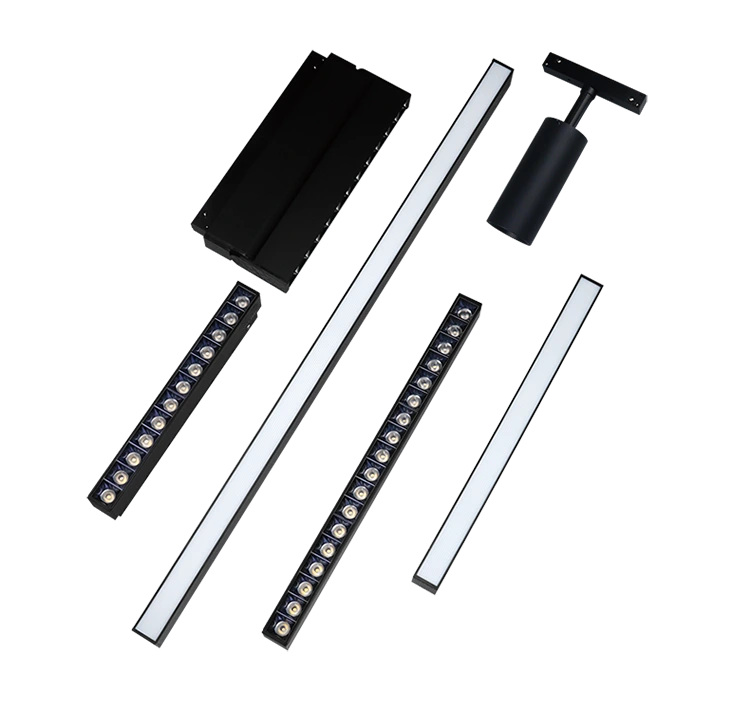What should be paid attention to when installing the linelight system?
2025-07-25
The linelight system is widely used in building lighting, interior decoration and other scenes due to its beautiful and energy-saving characteristics. The control of details during the installation process directly affects its service life and lighting effect, and professional specifications must be followed.

Preparation work before installation is the basis. It is necessary to check the matching degree between the specifications of the linear lights and the installation environment: IP65 and above waterproof products should be used for outdoor installation, and IP66 level is required for indoor humid areas (such as bathrooms); calculate the power according to the installation length to ensure that the transformer load rate is controlled at 70%-80% (such as 100W transformers are adapted to lamps with a total power of ≤80W) to avoid overload and burning. At the same time, check whether the appearance of the lamp is damaged, whether the insulation layer of the wire is intact, plan the wiring path in advance, and avoid strong electrical interference sources (such as motors and transformers).
Standardized operation during the installation process determines safety. When fixing lamps, stainless steel expansion screws (rust-proof grade ≥304) are used outdoors, with a spacing of ≤50cm; snap-on installation can be used indoors to ensure that the horizontal error of the lamp is ≤3mm/m. The wiring link needs to distinguish between positive and negative poles. When multiple groups of lamps are connected in parallel, the cross-sectional area of the main line should be ≥1.5mm². The joints should be sealed with waterproof terminals (outdoor) or wrapped with insulating tape (indoor), and 10-15cm of wire margin should be reserved for later maintenance. For embedded installation, heat dissipation space should be reserved, and the distance between the lamp and the wall should be ≥2cm to prevent heat accumulation and light decay.
Debugging and protective measures ensure long-term stable operation. Use a multimeter to detect the loop resistance (normally ≥0.5MΩ) before powering on to avoid short circuits; check the consistency of the light after turning it on, and fine-tune the angle to ensure that the light spot connects naturally (deviation ≤5°). Outdoor systems need to be equipped with lightning protection devices (surge protector current resistance ≥20kA), and regularly clean the dust on the surface of the lamps (once every quarter); indoor systems should be kept away from heat sources (such as radiators, air-conditioning outlets), and heat dissipation holes should be added when the temperature exceeds 40℃.
Following these installation points, the linelight system can not only present ideal lighting effects, but also extend its service life to more than 5 years, reduce the subsequent maintenance costs, and play a lasting value in architectural decoration and landscape lighting.


